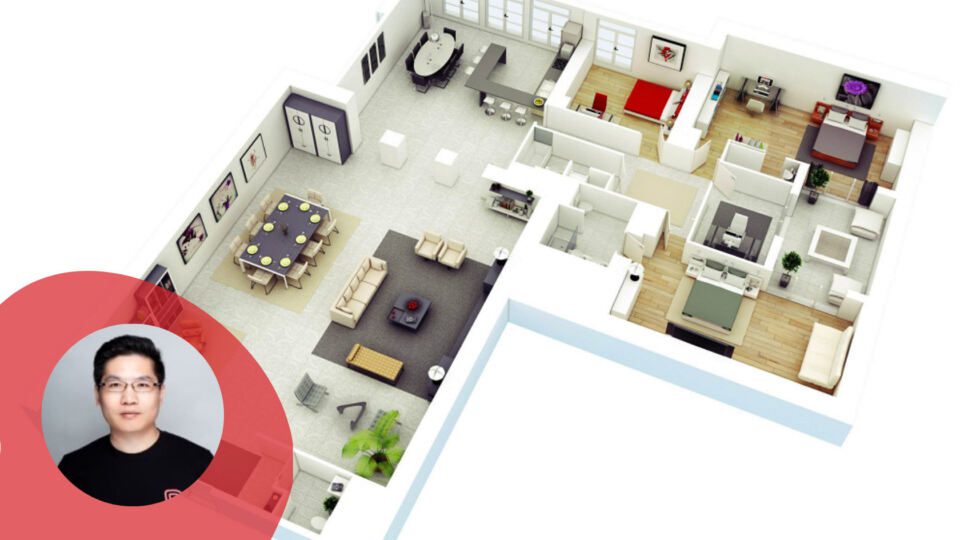As with most industries, the pandemic accelerated processes that were well underway in the interior design sphere during the past few years. Thanks to the latest technological developments, the warehouse-first marketing approach has been losing steam, and online purchases are taking the lead. Virtual reality functions and applications are emerging as innovative solutions to fulfill customers’ demands, playing a crucial role when facing the industry’s most pressing challenges.
When we consider the consumer’s life changes brought on by COVID-19 restrictions and most people’s urban living conditions, there are three main issues we, as designers, will need to tackle in the coming year. The first one is establishing a site’s function, so visitors immediately feel the intended energy when they walk into a room. The second one is putting together spaces without going into stores, trying furniture and meeting with customers. And the third one is giving small spaces a luxurious and quality interior look without breaking the bank.
To overcome these tasks, here are five trends that will shape interior design in 2022:
1. Balance in Colors and Materials
What we have experienced over the past two years has affected how we relate to the spaces we inhabit. The sanitary crisis has made us more conscious about our health (physical and mental). The initial lockdown gave way to a renewed appreciation for nature, which ties in with worldwide concern about the environment’s state.
In the interior design realm, these preoccupations will dictate future decisions about colors and materials in 2022. To be more in tune with our surroundings, natural materials sourced from responsible providers, such as wood, rattan, wicker and stone, will continue to gain traction. Additionally, there will be more reusing and recycling of furniture and décor to give items a new purpose or meaning.
As for the colors, neutral, earthy tones will take center stage, as these are hues that evoke nature and bring the outdoors in to create calmer environments. We will also see statement colors in selected pieces throughout the homes to create balance as people experiment with bold choices that reflect their personal style.
2. People Show Their Individuality
Personalization was a big trend in 2021, and it will roll over into next year as people discover that there is more than one way to incorporate who they are into their homes. Long gone are the days when people compared their setups with others’ or strived for someone else’s aesthetic. Now it is all about experimentation and finding each individual’s style.
To achieve this, designers should encourage people to choose colors and patterns they love or to create rooms with a theme they like. They should seek creative ways to incorporate elements that tell the client’s story, whether through photographs, one-of-a-kind artwork or furniture with special meaning. These items hold nostalgia and give the house a homey, warm feeling.
Finally, whoever is coordinating the interior design should consider that person’s daily activities and should adapt the rooms to fit those needs. Inquiring about day-to-day uses and hobbies is the first step to optimizing spaces — for example, opening up a wall to make a bigger kitchen for an amateur chef or sectioning off the TV room from the office space.
3. Find Ways to Bring in Nature
When we think about integrating natural elements into our home, the mind immediately goes to greenery, a significant trend for the past few years. However, we’ll see different ways of incorporating nature indoors in the future. Plants like pampas and baby’s breath offer a new take, and furniture made of materials such as wood, clay, stone, rattan or wicker adds warmth and lightness to a closed environment.
What is more, the nature-conscious mindset goes beyond what we bring into our home as more people focus on how it got into their homes. Sustainable shopping will become more relevant in the coming years, because people are researching more about design methods that support the planet. They prefer suppliers that source their materials responsibly or that work with recycled pieces.
In this sense, the industry can expect to see more items passed down from family members, second-hand furniture and DIY projects that are cost-effective and have a lower carbon footprint. Décor and furniture brands would be wise to start looking for ways to incorporate services that tend to these customers’ needs, like restoring or upcycling.
4. Multifunctionality: From Living Room to Home Gym
The dynamic the pandemic has imposed on most people means that several very different activities are happening in the same area. To maintain a healthy balance among them, division is crucial. In this case, the main challenge is to help customers create multifunctional spaces with as little intervention as possible.
Designers need to keep in mind that the setting of each room establishes its function. The lighting, furnishings and décor communicate its purpose and help whoever walks in to get into the proper mindset. However, when there’s limited square footage, there might not be enough space to assign a room for each of the client’s activities or interests.
Fortunately, there are simple yet effective solutions, such as space dividers or furniture/storage combos, that can quickly transform a room or allow it to have a space with multiple functions. These have been popping up everywhere since the pandemic started, and they will continue to grow over the next year even if the pandemic ends (fingers crossed).
5. AI and AR Step up
Home design processes are bound to become more efficient and less stressful for the client as businesses implement smarter technology every step of the way.
The pandemic has accelerated the transition from the traditional method of home design, which involved a lot of in-person meetings, to a more practical way of consultancy. Whereas before the process was labor-intensive and time-consuming, now, thanks to a wide variety of tools that use artificial intelligence (AI) and augmented reality (AR), individuals, as well as businesses, can leverage their features to keep up with the ever-changing industry trends.
For instance, mobile applications such as DecorMatters implement AR to help users visualize real furniture models in their homes before purchasing. And AI allows companies to provide a unique design experience by recommending furniture, art or inspiration that fits the client’s particular style and preferences.
We are just beginning to explore the different implementations these tools have in the interior design industry. It is the area where we can expect the most growth and experimentation in the near future. And if what we are seeing now is mind-blowing considering where we were a few years ago, I for one can’t wait to see where this goes.
Farris Wu is Founder and CEO at DecorMatters. He is a multi-disciplinary entrepreneur with success in three industries: consumer technology, venture capital and commercial real estate. Prior to DecorMatters, Wu co-founded and served as Managing Director of ZenStone Venture Capital to bridge China’s capital and innovations in Silicon Valley. Wu was named a Top 20 Best Cross-Border Venture Capitalist by China Venture and Hurun Midas List in 2016. He obtained a Ph.D. from the University of Texas at Austin, and B.S. and M.S. from Harbin Institute of Technology, China.








